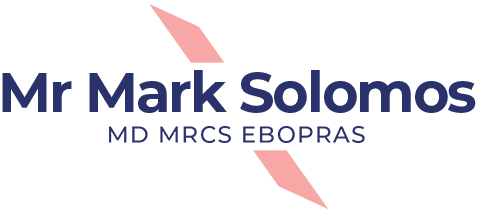Surgical Treatments
Midface Lift
The midface changes with age, the effects of gravity, repeated muscle contraction, and lifestyle, causing the skin, fat, and muscle in this region to move downwards. When this occurs, the cheeks begin to look less plump, the lower eyelids can become puffy or hollow, and circles begin to appear under the eyes and the lines between the nose and the corner of the mouth deepen.
As a result newer techniques have been developed to improve this flattening and the descent seen in the mid face, with procedures effectively lifting the middle segment of the face by restoring the volume and fullness as well as enhancing the appearance of the cheekbones.
The best candidate for a midface lift is skin that still has some elasticity, yet there is no ‘ideal’ patient, and results differ dependent on the condition of cheeks, eyelids, and smile lines.
If you are a smoker you will be asked to stop smoking well in advance of surgery as well as for a period after the operation(generally 4 weeks before and 4 weeks after).
What is the aim of the midface lift?
The aim of the midface lift is to restore the natural curves and fullness in the cheeks by moving soft tissues back to where they were earlier. This is achieved by elevating the soft midface tissue from the bone, repositioning it upward towards the eyes, and fixating it in place until it readheres naturally to the bone. The result will be a natural, revitalized appearance.
A new approach for midface suspension allows Dr. Solomos to quickly lift and secure tissue at a new position by using an implant called the Endotine Midface device that offers a predictable alternative for cheek suspension, enabling shortened surgical times and improved aesthetic outcomes.
What type of anaesthesia is used and how long does the surgery take?
Dr. Solomos uses a general anaesthetic for the midface lift that takes about 45 minutes to perform.
Immediately after surgery, patients experience some temporary swelling and bruising in the midface region, which may take several weeks to completely resolve. There may also be some stiffness in the mouth region that normally subsides after 10-14 days, for the first night, it’s important to rest with the head elevated to decrease swelling and bruising.
Can the mid face lift be combined with other facial operations?
Yes. Many patients who consider this type of surgery also request improvements to the neck, brow and eyelid regions and can in fact undergo simultaneous work these areas as well.
As the incisions are small and in hidden areas these cannot be readily seen. Patients will have a small 1 inch scar in the hair bearing skin of each temple as well as a small 1 inch scar inside the mouth, on the inside of the upper lip nb. all sutures used are of the dissolving type.
Using the Endotine device the procedure is not considered particularly painful yet some patients feel some discomfort in the middle part of the face for the first few days, which is controlled with pain medication.
How long before I am back to normal?
Patients are back to normal in a few days yet should plan on being gentle with the body and avoid strenuous activity for a week.
At the beginning the face may feel unusual from the swelling, and facial movements may be slightly stiff. Most patients are back at work from about ten days to two weeks after surgery, camouflage makeup can mask most remaining bruising.
The midface area is an important consideration when thinking about facial rejuvenation. as effectively creates a facial uplift that’s rejuvenated in a subtle, natural way with less bruising, swelling and downtime.




